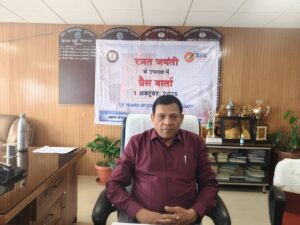 On the momentous occasion of BSNL’s Silver Jubilee, Charan Singh, Chief General Manager of BSNL HP Telecom Circle, addressed the media to highlight BSNL’s remarkable journey of transformation. Marking 25 years of service, he described this milestone as a celebration of national commitment, technological self-reliance, and renewed momentum.
On the momentous occasion of BSNL’s Silver Jubilee, Charan Singh, Chief General Manager of BSNL HP Telecom Circle, addressed the media to highlight BSNL’s remarkable journey of transformation. Marking 25 years of service, he described this milestone as a celebration of national commitment, technological self-reliance, and renewed momentum.
For the first time in nearly two decades, BSNL posted back-to-back quarterly profits—₹262 crore in Q3 FY25 and ₹280 crore in Q4 FY25—driven by improved cost efficiency, 4G expansion, asset monetization, and a growing enterprise/FTTH base. These developments have not only improved Average Revenue Per User (ARPU) but also signaled BSNL’s strong financial revival.
Himachal Pradesh Circle reported a 25% revenue jump—from ₹260 crore in FY 2023–24 to ₹325 crore in FY 2024–25. In Q1 of FY 2025–26 alone, revenue surged by 27% compared to the same quarter last year (₹63 Cr to ₹80 Cr).
BSNL HP has significantly ramped up 4G infrastructure by commissioning 1,912 4G towers, including 532 DBN-funded towers in rural and tribal belts of Lahaul & Spiti, Kinnaur, Pangi, Bharmour, and Tissa. These sites have connected 881 previously unconnected villages, ensuring high-speed internet access in some of the most challenging terrains.
As of now, BSNL HP operates 1,202 2G BTS, 806 3G nodes, and 1,912 4G eNode Bs, with a mobile customer base exceeding 17 lakh, including 3 lakh new customers added in the past year.
BSNL’s FTTH services continue to gain traction across Himachal Pradesh. With over 80,810 connections as of August 2025 and 9,270 new additions by September 2025, the services now span every district—urban, semi-urban, and rural.
More than 250 Local Cable Operators (LCOs) and FTTH partners collaborate with BSNL HP, playing a crucial role in achieving last-mile connectivity, a cornerstone of the Digital India mission. With affordable plans offering speeds up to 300 Mbps, BSNL remains a trusted broadband provider for homes, businesses, and institutions.
BSNL HP has also witnessed a 124% surge in leased circuit (LC) provisioning, rising from 269 in H1 FY25 to 602 in H1 FY26. Corresponding revenue doubled to ₹10.49 crore from ₹4.76 crore during the same period. The organization currently manages 5,790 leased circuits, catering to major clients like HPSEBL, HPGB, SBI, PNB, and the State Disaster Management Authority.
Notably, nearly 100 satellite phones with Inmarsat stations have been provided to critical agencies, playing a key role in disaster management and emergency communications.
Under the Amended BharatNet Programme (ABP), Himachal Pradesh is set to benefit from a massive ₹2,450 crore investment to digitally connect 3,615 Gram Panchayats and around 15,500 villages by 2027. The initiative includes IP-MPLS routers, OFC ring architecture, remote fibre monitoring, and resilient power systems—dramatically improving connectivity for schools, health centers, police stations, and government offices.
Implementation is being carried out by ITI Ltd, ensuring reliable and scalable digital infrastructure across the state.
Reflecting on BSNL’s journey since its corporatization in October 2000, Charan Singh outlined major milestones—from the launch of mobile services in 2002, early 3G adoption in 2009, to the end of telegrams in 2013, and the 2019 and 2023 revival packages that fueled spectrum and capex augmentation.
By 2025, BSNL has emerged as a key driver of indigenous 4G rollout with 18,685 new sites, demonstrating resilience, transformation, and commitment to national priorities.

